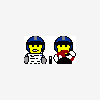R33 Rb30 Conversion
Announcements
-
Similar Content
-
Latest Posts
-
I would paint match the whole thing to avoid unwanted attention I had a similar bonnet, paint matched, on my old R33 GTST, but mine was a fibreglass jobbie made by Blitz in QLD, they work extremely well for radiator efficiency and under bonnet temps
-
Does anyone run this kit with factory plenum? Does the adapter and bosch tb fit under factory strut brace? I wanted to get this setup before going forward facing manifold. Thanks
-
small update time, after always wanting a "cool" looking bonnet for my car and always struggling to find one for the series 2 that i liked and wasn't an insane amount of money. Saw one i liked on RHDjapan from D-speed in Japan the price was very good for a carbon bonnet so good infact i was a little unsure how much i trusted it, decided to bite the bullet and with the help of jesse streeter in not long at all it was at my door. Once it was delivered i ran in from work and quickly unboxed it and to my surprise the quality was actually pretty good i quickly removed the old bonnet and placed on the new one to test it out and even the fitment wasnt too bad at all. Then decided to paint the little grille in the bonnet black to stop it sticking out so much. I decided to not mess around with the hood latch and just install some aero catch hood pins, having never installed them before did some YouTube university classes and i was good to go. fair to say it is not a fun job at all from making brackets so the pins sit nicely and actually cutting through the bonnet but also being very scared of cutting the holes too big it took wayyyy longer than i would like to admit but finally got it there. Then it was time for a quick test drive to ensure the latches actually worked and thankfully the bonnet looked very stable. I still think paint matching the bonnet and leaving just the part that sticks up as carbon would help make it all look alot neater as im not sure how i feel about all that carbon on a very fridge white car but will leave it as is and see how i feel with time.
-
I think it's bound to happen, you finally get it all perfect, and bam, something will happen. I took a while to get a Commodore rear quarter repaired where a P Plater clipped it. Two days after getting it back, Sarah wiped it out on a concrete pillar in an underground car park... This is why I take forever to repair them, it stretches how long until it gets bent again... 😛
-
Nah, not really responsible for that little fiasco, but I'm still pissed at myself for writing off my 86, or when I reversed my VX into a pole just before selling it, but, meh, 5hit happens to stuff, all it takes is a slight distraction, and life is full of distractions, and "dooh" moments
-










Recommended Posts
Create an account or sign in to comment
You need to be a member in order to leave a comment
Create an account
Sign up for a new account in our community. It's easy!
Register a new accountSign in
Already have an account? Sign in here.
Sign In Now